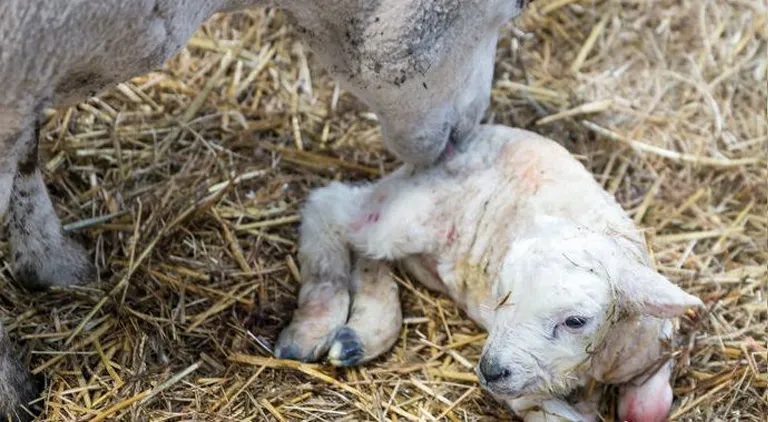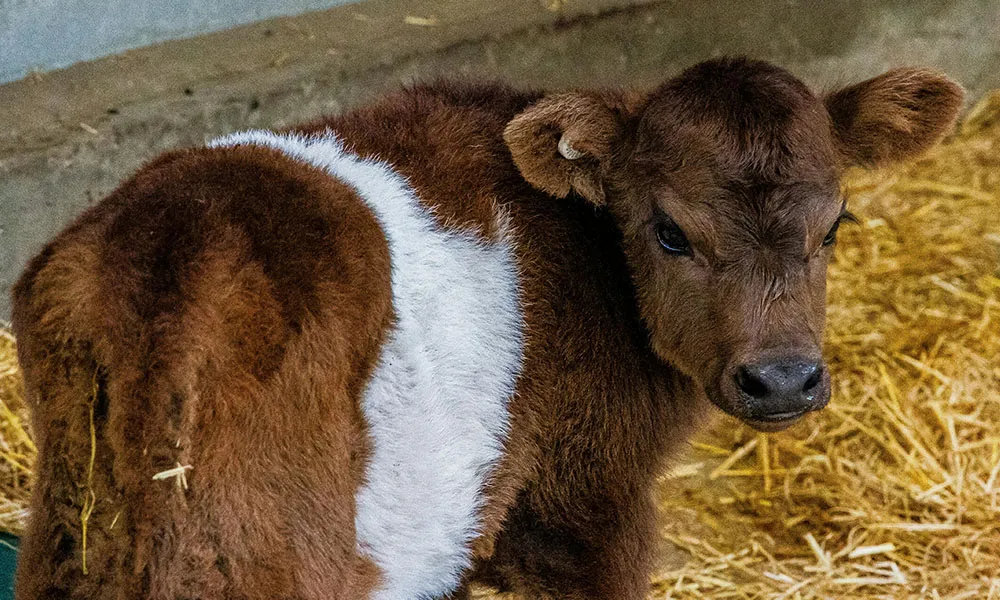
Feeding before lambing
Feeding the ewe well in the weeks before lambing can help reduce first 24-hour lamb losses significantly. Ewes that have a good quality diet of high dry matter silage/hay and concentrates will fair better, it will help the developing lamb fetus grow and ensure the lamb has an adequate layer of fat to help provide energy for the first few hours after birth.
Good feeding of the ewe will also help ensure that the lamb is vigorous when born, supplying the lamb with energy to help it stand and suck early. It will help the lamb develop a full coat of wool, providing a layer of insulation so it doesn’t lose heat quickly and protecting it from the weather.
A well-fed ewe will also have more energy during the birthing process and for licking her lamb dry. Any ewe showing signs of energy deficiency after the birthing process may be given an energy boost by administering a glucose drench with vitamins and minerals such as Collate multi lamb rapid or Grovite Multibirth. Once the lamb has been licked dry and is up and feeding a plastic or material lamb coat can be put on the lamb to help preserve heat.
Importance of colostrum and the first suck.
Colostrum, also known as beestings, is the first milk that the ewe produces in the 24 hours before and 24 hours after birth. It is thicker, creamier and has higher levels of protein and fat than normal ewe milk and will help provide the lamb with food and energy to survive. The colostrum contains antibodies which are proteins that fight bacteria and viruses, these antibodies help the lamb fight against disease in the first few days after birth.
It is very important that the lamb manages to stand and suck in the first 30 minutes after birth, most ewes will help this process by nudging the lamb gently and standing for them to feed. It is important to watch carefully for weak lambs that are unable to do this, they may be weak from prolonged lambing, have a lack of energy or be unable to stand due to joint problems.
Any lambs showing early feeding problems should be fed 200ml of suitable colostrum such as Volac Lamb Volostrum which comes in handy measured sachets. This is best done using a lamb syringe with catheter/ stomach tube.
Hypothermia in lambs
Hypothermia, which is dangerously low body temperature, is one of the biggest threats to lamb survival in the first 24 hours after birth. Lambs from multiple births, weak lambs or lambs with joint problems are most at risk of this. A lamb that has not received their first suck in the first hour after birth will start to get cold. Poor weather conditions such as cold, rain and wind will also contribute. It is very important to watch for signs that a lamb is developing hypothermia, such as lambs that are not standing, lambs that appear tired and weak or lambs that may be lying with their head tucked into their body. They may not be baaing and may not have the energy to follow the ewe. These lambs get cold very quickly and hypothermia sets in.
Lambs can be safely taken from the ewe for rapid treatment at this stage if they have been licked and the ewe has bonded with the lambs. If outdoor lambing, it would be preferable to house the ewe at this stage in a draught free house or pen or place her in a smaller paddock where the lamb can be returned easily.
It is important to carefully assess if the lambs have hypothermia. This is best done by taking the lamb's temperature using a digital thermometer.
Normal lamb temperature should be between 39°C and 40°C.
If the lamb has a body temperature lower than this, it is developing hypothermia and will need to be warmed.
If the lamb’s temperature is 37°C to 38.5°C then dry it thoroughly and stomach tube with 200ml of warm colostrum. Once fed, return to the ewe.
Keep a close eye on the lamb - if they do not respond to this treatment within half an hour, remove them again and supply extra heat by placing them in a lamb warming box or under infrared light.
It is important to carefully observe the lamb while under the lamp.
Once their temperature returns to 39°C they should be returned to the ewe.
Lambs with body temperature of less than 37°C have severe hypothermia and may be comatose, do not attempt to feed or stomach tube a lamb with severe hypothermia, instead warm them using an infrared light or warming box and feed once their temperature returns to 37°C, continue to warm them until their body temperature returns to 39°C and return to the ewe.
Infection prevention
Infections such as watery mouth can kill lambs quickly. It is caused by e coli bacteria which can be present on the ground or on soiled bedding. Newborn lambs have very little resistance to it, although lambs who have consumed adequate amounts of colostrum seem to be less likely to be affected.
It is important to keep bedding clean and lambs navels should be treated with iodine both after outdoor and indoor lambing to prevent infection.
Predation prevention
This is very important in outdoor flocks. Foxes will instinctively watch lambing ewes and they will eat the afterbirth/cleanings from the ewe as well as snatch weak or newborn lambs.
A fox light may be used to deter the fox, moving its location every couple of days will help reduce the chance of the fox getting used to the light.
A fox repellent oil may also be applied to the neck of the newborn lamb once he has bonded with the ewe and been licked dry, never apply this oil to the rear of the lamb as the ewe will not be able to recognise the smell of her own lamb and it will affect bonding.
Plastic lamb jackets may also help reduce predation as the fox may be deterred by the rattle of the plastic.
Maureen Kilgore










